

|
MAS ETH ARCH/CAAD HAS MOVED: wiki.caad.arch.ethz.ch/Education/MAS
Chair of CAAD, ETH Zurich
MAS ETH ARCH/CAAD, 2003-04: INDIVIDUAL THESES
|
MAS-STUDENTS 2003-04:
|
- Dürr, Christian
- Ebnöther, If
- Grabfelder, Jörg
- Jach, Anna
- Jung, Jae Hwan
- Kapellos, Alexandre
- Logara, Irena
- Ribaudo, Michelangelo
- Sommer, Hanne
- Sowa, Agnieszka
- Wngerath, Detlef
- Wirsing, Thomas
- Yeh, Li-Hsuen
|

Title: MORPHOGENESIS – Evolution of Shape; IMAGINATION AMPLIFIER Version 1.0
Author: Dürr, Christian
Date: 10.2004
Abstract:
- "The advent of computer technologies in the design-processes has already taken place, is meanwhile ordinary. New design perspectives are opened, and an almost inexhaustable form repertoire is available, even buildable - ‘Nothing is impossible‘. This thesis work deals only with a small clip from there. Essentially it consists of two parts: » MORPHOGENESIS – Evolution of Shape « describes the present situation of generating shape with the help of computers. Some of the technologies that are used for, as comupter-morphing or evolutionary programming, are examined more closely here. »IMAGINATION AMPLIFIER Version 1.0« is an interactive Form-Generator for houses - a House-Machine. The program deals with the possibilities of interpolation and morphing between two, 3 dimensional, states (Startand Target-House) configured by the user. As an output–result, the generator depicts the put in number of steps in between, with characteristic values like cubical contents (V), surface quadrature (A) and the relation between V/A. All the results are stored in a database, where it is possible to select from for new morphing operations, to get in the end closer to a more optimized shape."
Download: 041029_Duerr-C_Thesis.pdf (4.9 MB)
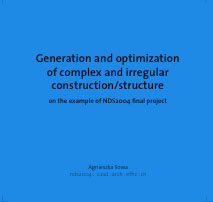
Title: Generation and optimization of complex and irregular construction/structure on the example of NDS2004 finalprojet
Author: Sowa, Agnieszka
Date: 11.2004
Abstract:
- "During the postgraduate studies in CAAD at ETH the research is mainly focused on computer based architectural design and its automatic production. Usually the way from an architectural idea to production starts with creating of a digital model of the structure which is than transformed into data which can be used by CNC machines. The final group work of NDS 2004students also follows this schema. This thesis is centered on its first element–computer aided architectural design.The aim of the research was to create a programming tool which generate linear construction grids for a cubic form and then optimize them according to given parameters. The data produced during this process is then visualized by digital models which can be evaluated by a designer as ready for production or can be changed in a further design process. Eventually, this data is an input for scripting tools creating production drawings for CNC machines. The thesis contains information about the mathematical description of the structure, methods of its generation, analysis and optimization. It deals also with problems connected with data exchange and storage. The effect of the work is presented by visualizations of digital models as well as by using rapid prototyping methods. Moreover, the most spectacular result of using tools presented in this thesis is the NDS2004 exhibition structure."
Download: 041123Sowa-A_Thesis.pdf: (4.4 MB)
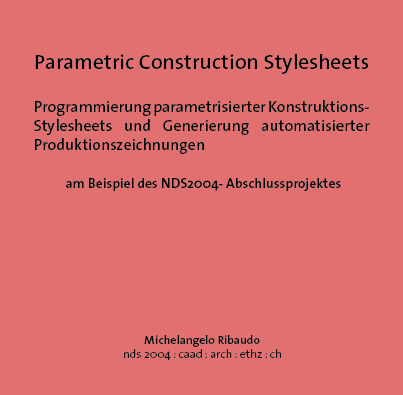
Title: Parametric Construction Stylesheets
Author: Ribaudo, Michelangelo
Date: 12.2004
Abstract:
- "The present thesis is centred on the use of programmed tools as alternative or as support of the classical computer aided architectural design methods.This thesis shows among other things how were programmed/generated the mathematical descriptions of the frames, the joints and the production drawings using MEL (Maya Embedded Language).Further will be discussed pros and cons of the imported and exported digital data structures for their respective purpose like the generation of the joint details, the model visualizations, the different prototypes and the generation of the construction stylesheets.The result of this work will be shown by visualizations of digital models as well as by using rapid prototyping methods and CNC machines.Moreover this thesis will deal with the programming of stylesheets which were used to generate variants of constructions.The NDS2004 prototype represents such a variant and was produced with the above mentioned programmed tools."
Download: 041226_Ribaudo-M_Thesis.pdf (5.8 MB)
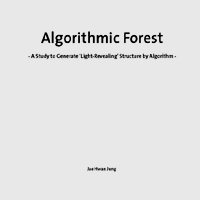
Title: Algorithmic Forest - A Study to Generate ‘Light-Revealing’ Structure by Algorithm
Author: Jung, Jae Hwan
Date: 12.2004
Abstract:
- "The research to be presented will demonstrate the potential benefitsofalgorithmsbyusing them to design and generate a structure, specificallyalight-revealingstructure. Light is one of the many considerations in architecture, it reveals the building, its place, form, space, and meaning. Light reveals architecture and, in the best instances, architecture also reveals light. Moreover, light and structure are intertwined. Louis I. Kahn said, “Structure is the maker of light. When you decide on the structure, you are deciding on light.“ Particularly, this presentation will focus on a structure, which creates variable lighting effects similar to those created by natural light shining through trees in a forest."
Download: 041203_JUNG-J-H_Thesis_web.pdf (1.2 MB)
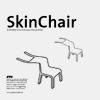
Title: SkinChair
Author: Ebnöther, If,
Date: 12.2004
Abstract:
- "The skin chair project is an exploration of some of the possibilities that CNC technologies offer for designers and makers. At the center of attention is the fascination with the possibility of small-scale, on-demand production without the need for large investments in tooling. A lot of work has already been done in this field. The skin chair project aims to examine a few aspects using specific tools available at ETH Hönggerberg. The idea for the skin chair emerged from a commercial project where I learnt how difficult it can be to manufacture a threedimensional seating surface for a chair in steel. The constructional concept of the skin chair is simple: two ribs at either side of the chair define the shape, a skin (a thin material) is wrapped around these thus a hollow volume is created. The simple principle lends itself to parameterisation and thus the creation of many variants of the intial design. In an attempt to approximate a real-life product scenario, a number of components of the workflow were prototyped."
Download: 041222_Ebnoether-I_Thesis_web.pdf (1 MB)

Title: Sampling - Visual Translation
Author: Sommer, Hanne
Date: 12.2004
Abstract:
- " Die vorliegende Arbeit befasst sich mit dem Thema der computergesteuerten Zusammenstellung und Übersetzung graphischer Fragmente, dem Sampling. Untersucht wird die Visualisierung von Buchstaben, Texten und Bildern, die in einem digitalen Transformationsprozess zu Bildern angeordnet und in einem weiteren Schritt von der zweidimensionalen Grafik in die dritte, haptisch erlebbare Dimension übertragen werden. Die Untersuchung mündet in der Herstellung eines computergefertigten Lichtobjektes, welches als Sample ebenfalls eine Mischung aus mehreren Objekten darstellt. Die Verarbeitung der Daten erfolgt digital. Die Transformation entsteht durch den Wechsel des Mediums, Poesie wird zu Grafik. Der Code des Alphabets wird in Bilder oder Bildfragmente übertragen, die durch eine computergenerierte grafische Anordnung gestaltet werden. Eine weitere Übersetzung erlebt das Bild durch seine Materialisierung, indem es in Vorder- und Rückseite einer transluzenten Oberfläche graviert wird. Das Zusammenfügen dieser Oberfläche mit dem Fragment eines Innenraumobjektes zu einem neuen Objekt bilden den Abschluss der Idee des Sampling."
Download: 041206_Sommer-H_Thesis_web.pdf (7 MB)

Title: XML_Anwendung: Schnittmuster für Mobiltelefone - apparently interacting daily used object need clothes
Author: Wngerath, Detlef
Date: 10.2004
Abstract:
- "Die Verifizierung der These “apparently interacting daily used object need clothes” ist das Ziel der vorliegenden Arbeit. Die Definitionen der Begriffe “Ubiquitous Computing”, “Smart Objects”, “Smart Behavior”, Smart...bilden den Hintergrund für die angewendete Methode. Im Sinne eines digitalen Arbeitsprozesses werden Schnittmuster, die für die Herstellung der Kleidungsstücke benötigt werden, in XML generiert, in XSLT transformiert und als Vektorgrafik ausgegeben. Die Schnittmustergrafiken werden anschließend über eine Druckerschnittstelle an einer Modellaserschneidmaschine “ausgeplottet”. Beispielhaft wird die Methode bei Mobiltelefonen angewendet. Dank der Firma “Max Gimmel AG” konnte Leder als Material verwendet werden. Als Beweis des Konzeptes wird in einer kurzen Animation zwei smarten Objekten eine Persönlichkeit gegeben: http://edu.caad.hbt.arch.ethz.ch/nds2004/623 Da jede Persönlichkeit Kleider bedarf und Kleider erst Leute machen, werden in einem weiteren Schritt Muster vorgestellt, welche in Vector-Works generiert, in Vector-Script programmiert worden sind, um wirklich smarten Objekten die Möglichkeit einer Gefühlsäußerung zu geben. Ein Angebot dieser Dienstleistungen wäre mittels einer Internetseite mit angehängter Datenbank denkbar: Maßgeschneiderte Handy-Kleider mit unterschiedlichen Mustern je nach Gemütslage."
Download: 041220_Wingerath-D_Thesis_web.pdf (0.8 MB)

Title: Finding of Form
Author: Logara, Irena
Date: 12.2004
- "The intention of the thesis is to explore the spatial effect created when multiple forces interact in the formation of space. Instead of modeling the form, an internal generative logic is articulated which then produces a range of possibilities for the “fi nding of form”. As a first step creative relationships are being built between the objects in the space and different behaviors are assigned to them. This way, objects interact with each other rather than just occupying space. New fields of infl uence are added or new relations made, creating new variations. These interdependencies then become the structuring, organizing principle for the generation and transformation of form. The surface boundary of the whole deforms as fi elds of infl uence vary in their location and intensity. The insertion of the dimension of time gives the opportunity to follow and observe the deformation process and establishes a relation of continuity between the objects and the space."
Download: 050112_Logara-I_Thesis_web.pdf (5 MB)
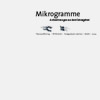
Title: Mikrogramme - Aufzeichnung aus dem Datengebiet
Author: Wirsing, Thomas
Date: 02.2005
- "Context: Not the final object but the design of a test sequence is the subject of investigation. The test sequence is generative with an open ending. The test sequence is the surrounding field of a transitorial process. This equipment is possible: A “typewriter”, which is readable by the designer. A performative design – a creative navigation instead of a aim-oriented design. Conditions like in an laboratory. The process is documented carefully, the results are collected. The process is unique, not repeatable and the duration theoretically endless. A man – machine installation.
- Conversion: Starting point are graphical figures distinguishable regarding to emergence and authority. The figures form polarities. The computer as mediator between the figures produces in-between formations, which can be read by the designer through interventions and interpreted spacially. (figures with architectural similarities) the results of this process are shown."
Download: 050202_Wirsing-T_Thesis_web.pdf (4.3 MB)
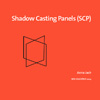
Title: Shadow Casting Panels (SCP)
Author: Jach, Anna
Date: 01.2005
- "In this thesis I present shadow casting panels for storing image information. A single panel can contain encoding of one or multiple images, and each separate image becomes visible depending on lighting conditions, presented as a shadow/light variation. For example, consider a sun-facing facade in three daylight situations: morning, midday and sunset. In the morning, when the sun shines from the east and the shadows are cast towards west, first image appears. During midday, when the sun has the highest position in the sky, shadows are cast downwards and the second image appears. During sunset shadows are cast towards east and the third image appears. At the intermediate stages of lighting, e.g., between morning and midday, one observes mixed states of the shadow/light interplay of the corresponding encoded images, which can yields visually attractive merged images. The panels are constructed by appropriate encoding of the images‘ information using especially constructed geometrical units. Although the geometry of the units is constrained by the target lighting conditions, many variations on the actual shapes of the units are possible. In the simplest cases, the units are relatively simple, which enables prompt and cost-effective production and installation. Units are can be laserd-out, cut-out, cast in concrete, plastic, plaster, etc. The assembly of the units into final panels can be easily automated. On the other hand, manual assembly yields an entertaining puzzle. In addtion to the method I developed also algorithms and programs, which automate the creation of the panels for desired images and lighting conditions."
Download: Contact: annajach -at- gmail.com

Title: _Lightscape - an exploration in interactive lighting
Author: Kapellos, Alexandre
Date: 02.2005
- "The aim was to provide a theoretical approach to the lighting project undertaken for the xCube group work. The nds2004 students had decided to build an interactive, computeroptimised structure as their final project, where lights, sensors and textured surfaces were to create an interactive experience for the visitor. For various reasons the interactive aspect was abandoned. The idea to work on a light(-ing) object came up when I discovered a little device called the Barionet™. This device allows you to control an on/off switch remotely, through a web interface or through programming. That was it! The ip_lamp (…its first name): a small object that has its own IP address, and therefore can be accessed via the internet. Turn it on or off… This evolved into the _lightscape where 2 interacting lights send each other data about the other (distance from a wall or number of people for example). The atmosphere of a room becomes dependant of what is going on in another… This work is also an attempt to develop a pluridisciplinary approach to an architectural project by making use of the many tools available to the postgraduate students: programming a simulation in Flash, experimenting with different hardware interfaces or rapidly manufacturing a light box on the 3-axis mill. A cross-over project in a (modest) way."
Download: 050225_Kapellos-A_Thesis_web.pdf (1.4 MB)

Title: xit - sit by kit
Author: Grabfelder, Jörg
Date: 02.2005
- " The aim of my individual thesis is to create a puzzle-like furniture kit containing a variety of connections which allows wide scope of combinations. By following of a certain code, the user can create different usage possibilities of a single unit. Starting with a modelplate with dimensions of 1m * 1m * 0.15m, containing slots, notches and openings, a puzzle is created. The parts, which are supposed to be assembled without using of any tools, are marked with a special code, which helps with the assembly of different variations.As an addition to the groupwork, I’d like to go more in-depth in CNC-connection research. The main premises for my individual thesis is building with machines, material testing and experiments with connection systems.Finally, some studies for an user-interface are going to be made. It should give the user a possibility to implement individual parameters, like the art of material, dimensions and function. The output furniture unit is going to be rendered on the screen."
Download: 050208_Grabenfelder-J_Thesis_web.pdf (1.6 MB)
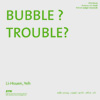
Title: Bubble - Trouble
Author: Yeh, Li-Hsuen
Date: 02.2005
- " In this thesis I would like to explore the bubble structure, seek a possibility to use computer programming to reinterpret soap bubble structure. Architecture today is not only built by concrete, steel and glasses anymore. Our power of the new tools will help us to discover the variety of prototypes. Beside a data-driven structure can change shape and define itself by the users. Wherefore structures will be able to adapt themselves physically to changing circumstances, instead of collecting sudden circumstances to enhance the architecture itself. "
Download: 050224_Li-A_Thesis_web.pdf (0.8 MB)
Revision r1.12 - 12 Aug 2005 - 16:15 - PhilippSchaerer
Parents: WebHome
|
Copyright © 1999-2003 by the contributing authors.
All material on this collaboration platform is the property of the contributing authors.
|
| |
|
This website has been archived and is no longer maintained. |



